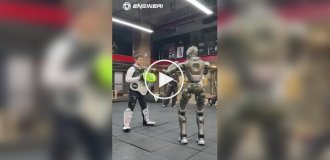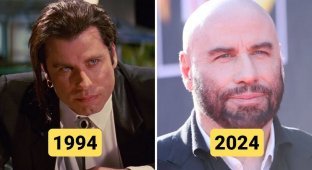11 Most Mysterious Movie Riddles That Continue to Excite the Minds of Mystery Lovers (23 photos)
Was Rick Deckard the man in the suitcase from Pulp Fiction, the box from Barton Fink, and the package from Rogue One, how to use the seashells from Demolition Man - there are no exact answers to these and other questions, but there are hints in the films, the words of directors, and fan theories. 
Curiosity is an integral part of human nature. We desperately want to know the answers to these cinematic questions, just as we are eager to unravel the secret of a magic trick. However, as with the trick, the solution may disappoint us. After all, such riddles are not meant to be solved.
But this does not stop us from trying to decipher the messages from the big screen.
1. How Tarantino explained the contents of the glowing case from Pulp Fiction 
Fans have come up with dozens of the most bizarre theories about what the suitcase contains. Among the versions are Elvis's golden suit and Wallace's soul sold to the devil (Tarantino scholars were prompted to do this by the code 666 that opens the suitcase). Under pressure from fans, the director himself was forced to reveal the secret of the suitcase. 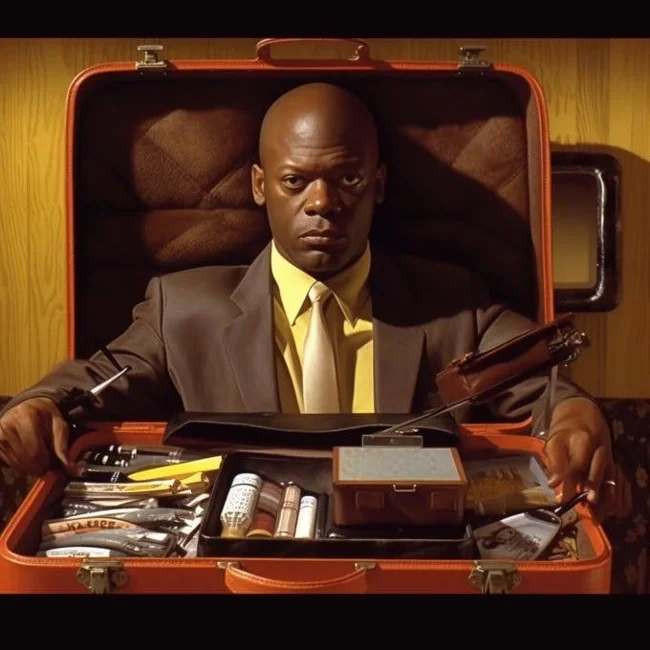
AI Version
The unknown contents of the briefcase in the movie "Pulp Fiction" is something of a paradox. Director Quentin Tarantino didn't really have anything in mind - he just wanted what was in the briefcase to play the role of a MacGuffin - an object around which the plot of the work is built, moving the plot forward.
"Nothing. It contains what the viewer wants to see there," - this is how the director answered the question about the contents of the briefcase.
Originally, the case was supposed to contain diamonds, but later Tarantino decided that it was too banal, and they were replaced with an invisible glowing object, leaving the audience to imagine something unknown, but very valuable.
2. Another mysterious box from the Coen brothers' "Barton Fink." What's in it?
Another case where viewers were left to ponder the true nature of an invisible object is the Coen brothers' surreal drama "Barton Fink," which ends with the main character sitting on the beach with a mysterious box. When asked what's in it, Fink replies that not only does he not know, he doesn't even know who it belongs to. 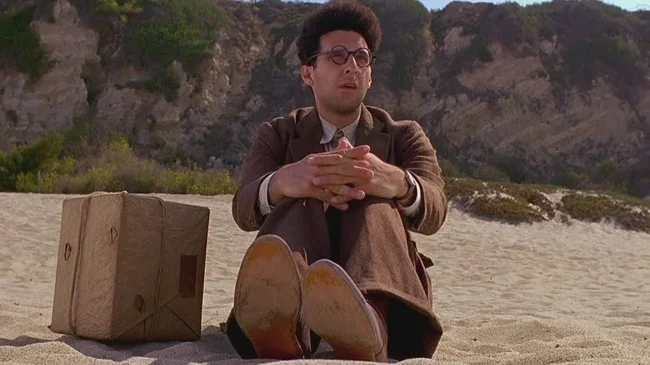
One of the most common theories among moviegoers is that the box contains the head of Fink's murdered lover Audrey Taylor. This makes sense, considering that the guy who gave him the box, Meadows, was a serial killer with a penchant for decapitating his victims.
Others take a less literal and more symbolic view, believing that the box contains a metaphorical representation of the creative abilities of a failed playwright. The only people who know the answer are the Coen brothers. 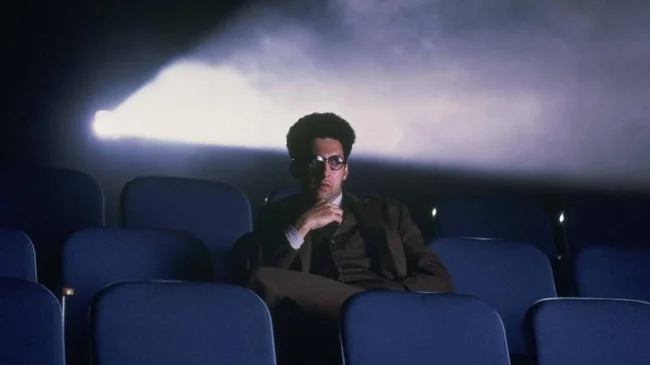
Be that as it may, directors have avoided discussing this topic for over 30 years. So don't expect to see a solution to this mystery anytime soon.
3. Replicant or Human? How Harrison Ford and Ridley Scott Answered This Question
Yes, Ridley Scott still believes that former police detective Rick Deckard in Blade Runner was indeed a replicant. But due to the ambiguous nature of the film itself, the question remains open. 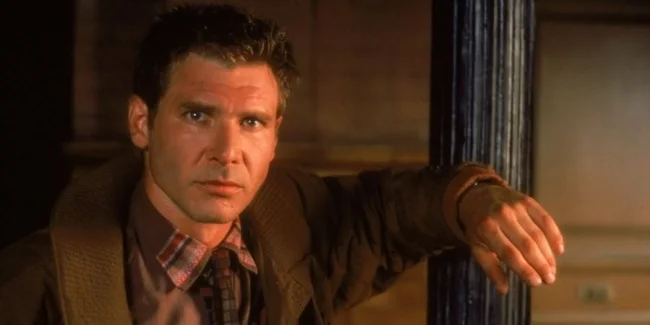
There is a lot of evidence to suggest that Deckard is an artificial life form. This includes his recurring dream with a unicorn, which is implied to be a neural implant. At the same time, there are some worthy arguments against it: Deckard's actor, Harrison Ford, himself claimed that he was portraying a human.
"I thought that audiences deserved one person on screen that they could connect with emotionally. I thought I had Ridley's agreement on that, but I think he actually had some reservations about it. I think he really meant it both ways," Harrison Ford said in an interview in 2006.
As with many other films on this list, the question is much more important than the answer. Perhaps that is why in the sequel, Blade Runner 2049, director Denis Villeneuve tactfully avoided directly answering this question. Incidentally, he said that Scott and Ford are still arguing about who Deckard was. 
In reality, it all comes down to whether you side with Scott or Ford. Although in the original Philip K. Dick novel, Rick was human.
4. What details from Inception provide clues to Cobb's dream 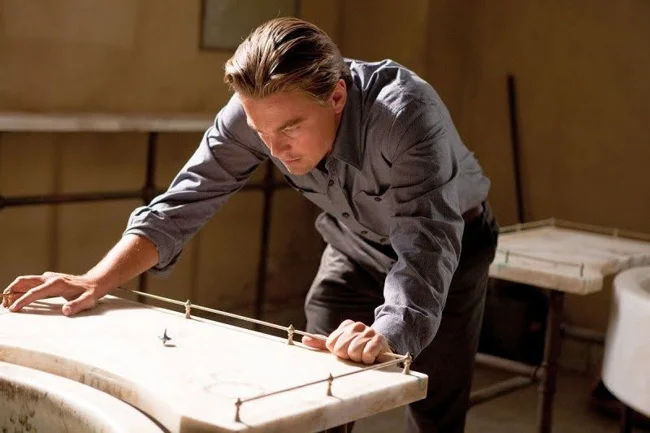
The most relevant topic of conversation about Christopher Nolan's Inception is its unfinished ending. In it, we see dream thief Dominic Cobb reunite with his children, while his totem - the top he uses to determine whether he is awake or asleep - continues to spin. Before the viewer can find out whether the top is spinning indefinitely (indicating that he is asleep) or not, the screen fades to black, leaving us to wonder.
Nolan himself, surprisingly, has been forthright in stating that the truth is somewhat meaningless. Because Cobb himself doesn't care anymore. However, there is evidence in the film - from the slightly swaying top of the top to Cobb's missing wedding ring (usually indicating that he is awake) - that strongly supports one of the conclusions. 
In the real world, he doesn't have a ring, while in his dreams, he does. In the final scene, he doesn't have the ring, so the "happy ending" is real
However, it is impossible to definitively prove whether the events of the finale are fantasy or reality, and debates about this continue on the Internet to this day.
5. The Parcel in "Cast Away." Robert Zemeckis's Cut 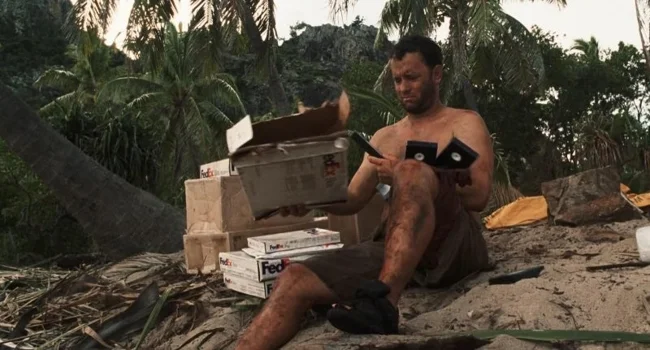
Systems engineer Chuck Noland finds himself stranded on a desert island. Left alone, Noland develops survival skills.
During his unplanned vacation, Noland opens all of these packages and uses their contents to survive. Except one. He leaves this one box sealed as a symbolic promise to himself that he will get home to deliver it to the recipient in person.
To his credit, Noland eventually fulfills this promise. But we never see the box opened (the recipient is not home), making it another chest of secrets on this list. However, the director of the film once humorously lifted the curtain on the secret. And as we know, every joke is a joke. 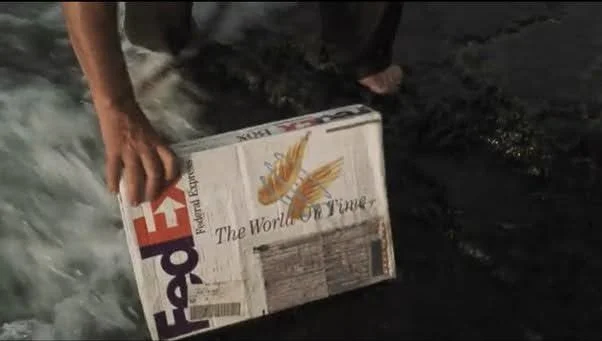
Director Robert Zemeckis once joked in an interview that the package contained a waterproof satellite phone - which would have been just great.
6. The Whispers in Lost in Translation: How Bill Murray Left Moviegoers Suspended and Made the Movie Better
Ironically for a film that succeeded largely because of its sparkling dialogue, its greatest mystery lies in a few lines that are impossible to hear and understand. 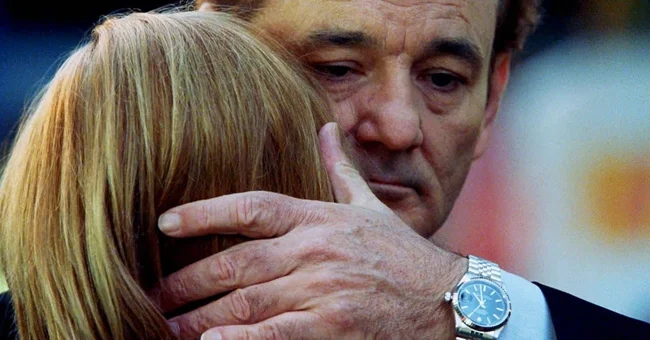
When fading movie star Bob Harris bids a heartfelt farewell to college graduate Charlotte on the streets of Tokyo, he whispers part of his farewell into her ear. Director Sofia Coppola has said that the line was improvised by Bill Murray. But there was something vague in the script, Coppola wanted to add a better line in the voiceover. But then she realized that the riddle was better.
Yes, there are videos on the Internet with an amplified voice of Bob, supposedly revealing his message to Charlotte. However, given the terrible sound quality, we cannot be 100% sure of the accuracy of the wording.
Yes, actually, why? After all, this scene once again reminds us that some things are better left as food for the imagination. By the way, Bill Murray himself always answers the question about whispers like this: 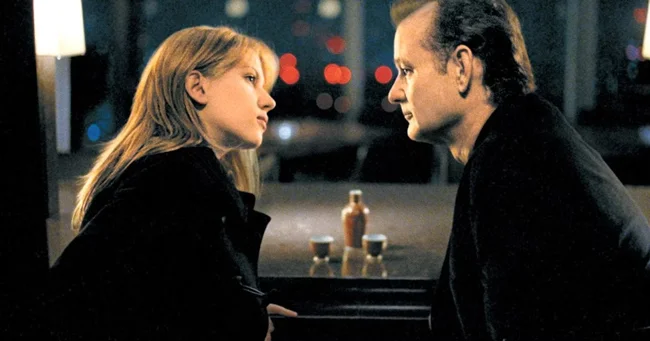
“This is a personal matter between lovers, let’s not interfere”
7. The origin of the scars in “The Dark Knight” is explained strictly according to the comics 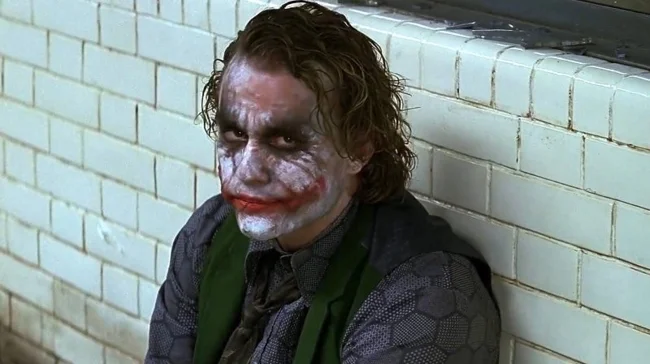
To create a truly chilling villain, Christopher Nolan and his brother and co-writer Jonathan decided not to come up with a definitive origin for the Prince of Crime. Instead, in a nod to The Killing Joke comic, the Joker opts to take a multi-choice approach to his backstory, telling two conflicting versions of how he got his signature facial scars. Here's what the Joker says in The Killing Joke: 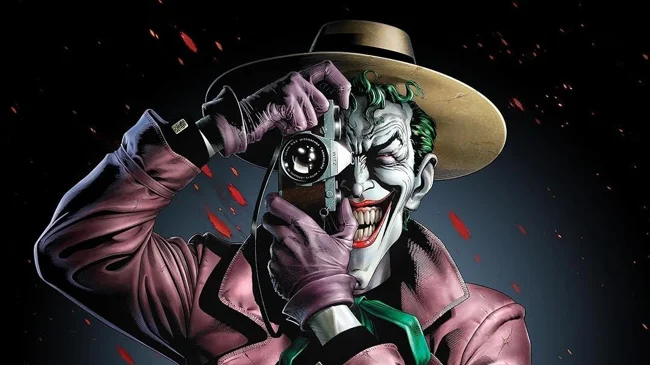
"Sometimes I remember it one way, sometimes another... If I have a past, I like to be able to choose it."
We never know if either story is true. Or was he about to confess to the Dark Knight before he was interrupted at the end? But knowing the Joker, don't count on it.
8. The final photo from 1921 is the main mystery of the cult film "The Shining"
At the end of the film, we see a photo taken at the Overlook Hotel in the 1920s. In it, Jack is standing in the foreground. What does this mean? 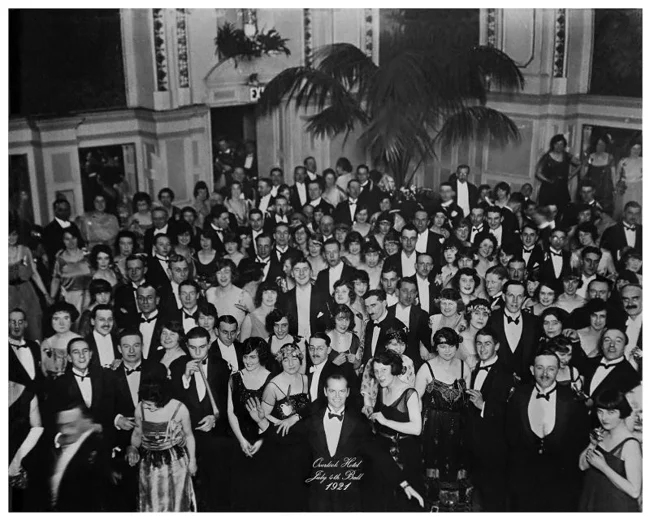
One of the popular theories is that the haunted house swallowed Jack after he died. According to another version, modern Jack is the reincarnation of the previous inhabitant who lived in the house many years ago. Meticulous viewers also noticed Jack Torrance's pose in this photo, which reminded them of this: 
Another detail of the photo that was noticed is 1921. It was in this year that the film "The Phantom Carriage" was released, from which the director borrowed the famous scene with the door being cut down. 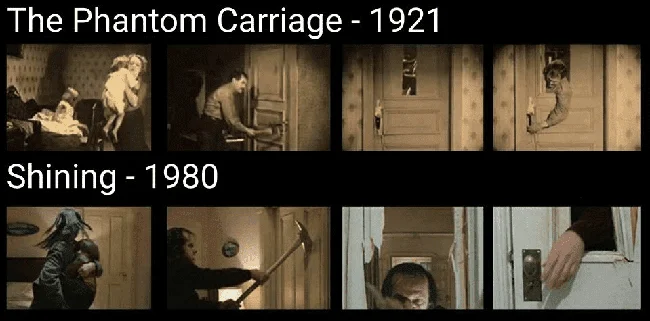
Alas, we will never know what Kubrick was getting at. The director preferred to leave the guesswork to the audience. The photo does not appear in Stephen King's original novel. But the photo is creepy, so it is quite in the spirit of the king of horror.
9. Only One Person Knows How "The Thing" Ends
The Thing from John Carpenter's cult classic of the 80s "The Thing" is a parasitic alien that can possess and imitate its human victims.
In the finale, the only survivors of the polar station where the Thing has taken up residence are pilot R.J. MacReady and mechanic Childs. Once the monster is killed, it seems that the surviving duo can rest easy. Or can they? 
As it turns out, not quite. There is a possibility that something is still alive in MacReady or Childs. The men seem to have resigned themselves to the hopelessness of their situation and calmly drink, slowly freezing and not trying to escape their inevitable death.
Different films and even a game filmed in the “Thing” universe interpret the ending differently. Somewhere the heroes freeze, somewhere one of them is infected. The actors and crew members also gave different versions of the development of events. But director John Carpenter said that only he knows who is infected and who is not. 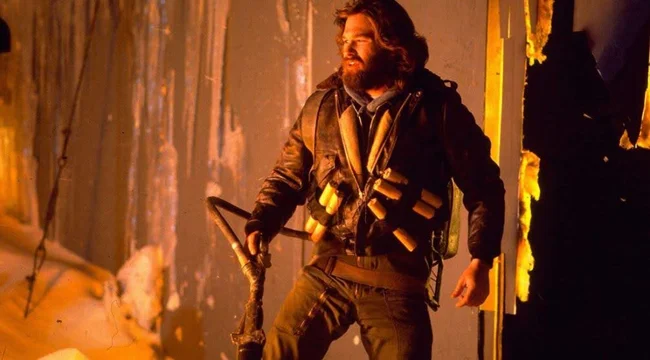
But Carpenter refuses to reveal the secret. He only speaks about the possibility of a sequel - MacReady and Childs will be saved.
10. How to use three shells in "Destroyer"? 
According to the movie “Demolition Man,” in 2032, instead of toilet paper, there will be three metal shells in the toilets. Sylvester Stallone’s character couldn’t figure out how to use them. In the movie, their purpose remained a mystery. But fans of “Demolition Man” figured it out.
There are two versions. According to the first, a special layer on the shells attracts waste. According to the second, you need to remove waste with two shells like tongs, and wipe it with the third one. The screenwriter of the movie himself admitted that he hadn’t thought about how to use them. But he told us how he came up with them. 
While creating the details of the future world, he called a friend and asked him to think about what toilets would look like in a few decades. The friend was in the restroom and began to describe what he saw. On the shelf he had several shells brought from the sea. "Add shells, I think they look pretty futuristic."
11. Why did Bill Murray's character get into a time loop in Groundhog Day?
The creators of the film did not know and did not want to know about the reason for the time loop. As you know, the loop is not explained in the film. However, the explanatory scene was still filmed at the request of the producers. 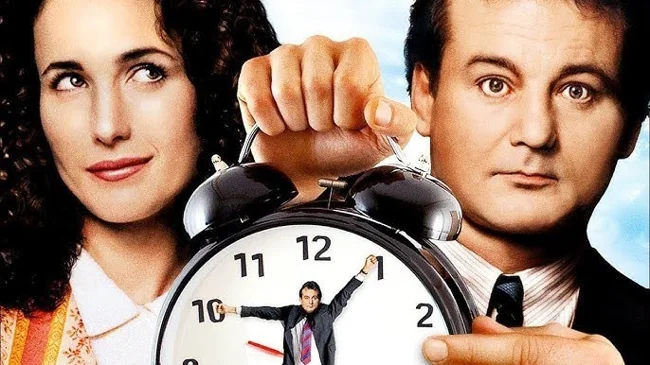
Screenwriter Danny Rubin was sure that the main feature of the film was precisely in the understatement. But he who pays the piper calls the tune, and the scene with the gypsy cursing Phil Connors was added. However, "accidentally", they did not have time to shoot it. And then Bill Murray's tight schedule did not allow this episode to be finished.
This is how the creators of "Groundhog Day" decided to disobey the producers and, fortunately, they were right! The audience appreciated the mysterious time loop, and the studio forgot about its condition after successful test screenings.





